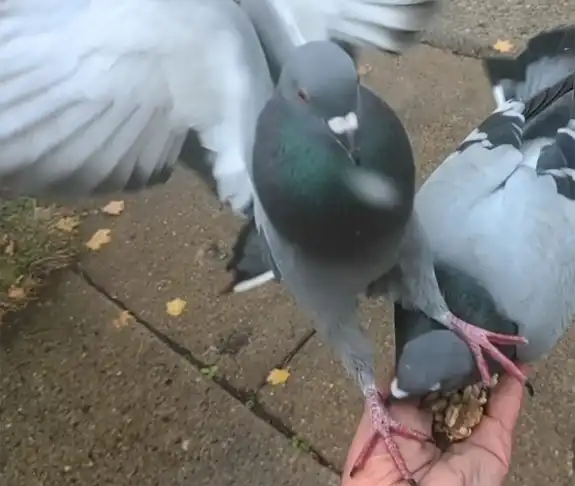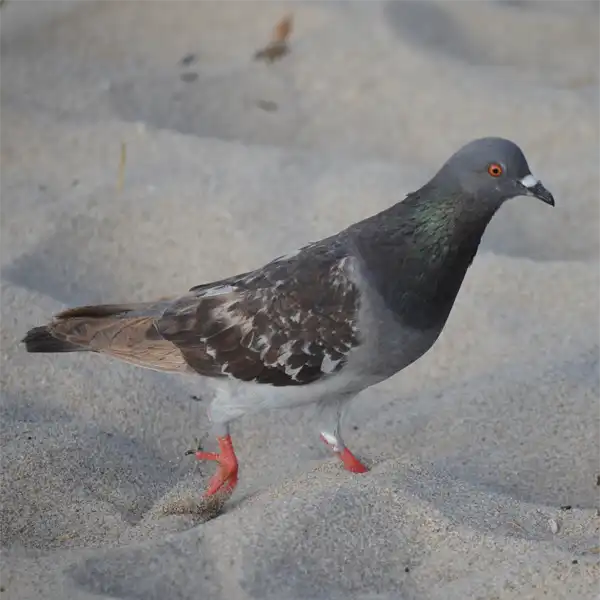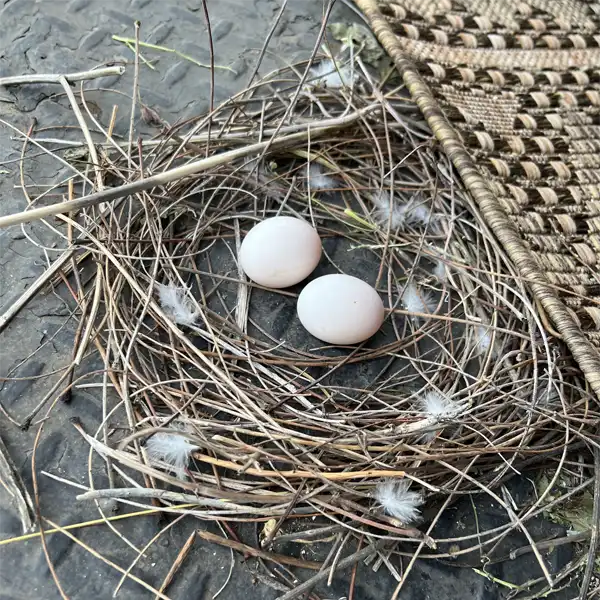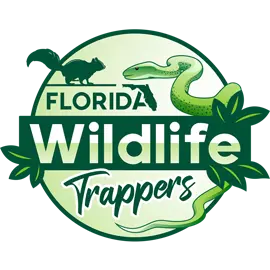Pigeon
- Scientific Name
- Columba livia
- Also Known As
- Rock Dove, Common Pigeon
- Range
- All of Florida
- Diet
- Grains, Human Waste
- Life Expectancy
- 2 - 5 Years
Quick Links
American Crows in Central Florida
The rock pigeon (Columba livia) is a common bird found in urban and rural areas of central Florida. Often referred to as the domestic pigeon, feral pigeons descend from domesticated breeds of the old world rock dove. They thrive in the warm climate and available food sources of central Florida environments.
This comprehensive guide provides identification tips, biology facts, and prevention methods for pigeons in central Florida. Read on to learn pigeon habits, reproduction, diet, health risks, signs of infestation, and professional treatment options if you need to manage pigeon problems on your property.
Appearance and Identification
Pigeons can be identified by their characteristic features
Maturation Rate
Young pigeons develop rapidly after hatching. Their eyes open at 4-6 days old and they are covered in juvenile down by 2 weeks old. By 3-4 weeks, flight feathers emerge and squabs are venturing out of nests by 5 weeks while still partly dependent on crop milk from parents.
They start picking up and eating seeds shortly after fledging. Maturation completes between 3 to 6 months when juvenile plumage is replaced with adult feathers and pigeons reach sexual maturity for breeding.
Habits and Behavior
Pigeons are highly social birds that gather in flocks. They are active during the day and forage on the ground for spilled grain and food scraps. At night they roost on ledges of buildings, bridges, and other structures.
Pigeons can become conditioned to food handouts in public spaces like parks and become semi-tame. However, they remain wary of direct human approach. Their flight pattern is direct with rapid wing beats interspersed by short glides.
Reproduction and Lifespan
Pigeons reach breeding maturity by 6 months of age and mate for life. They can breed year-round, typically raising 2-4 broods per year with 1-2 eggs per clutch. The female incubates the eggs for 17-19 days while the male brings food.
Squabs fledge in 4-6 weeks and reach full independence within 1-2 months after leaving the nest. Average lifespan in the wild is 2 to 5 years. With consistent food, lack of predators, and disease treatment, domestic pigeons can live over 10 years.
Ideal Habitat and Range
The warm, humid climate of central Florida provides an abundance of food and water sources ideal for pigeons. Average temperatures range from 60°F (15°C) in January to over 90°F (32°C) in July. Rainfall exceeds 50 inches (1270 mm) per year.
Developed areas offer grain spills around livestock feed stores and ports. Pigeons flock to parks and plazas where people feed them bread crumbs and leftovers. They gather on building ledges and bridges at night. Rural areas provide grains in agricultural fields and short grasslands to forage.
The steady availability of food year-round allows pigeon numbers to rapidly multiply given Florida’s suitable habitat. Flocks congregate where food waste accumulates, often becoming a nuisance through droppings and damage. Proper sanitation and flock dispersal is required to control pigeon overpopulation.
Diet and Feeding
Pigeons are highly adaptable omnivores but seeds and grains comprise the mainstay of their diet. They also opportunistically consume:
- Cereal grains – wheat, rice, corn, oats, barley.
- Oil seeds – safflower, sunflower, canola, flax.
- Legumes – beans, lentils, peas.
- Fruits – berries, melons, apples.
- Insects, snails, worms – for extra protein.
- Leftover foods – pizza, fries, sandwiches.
Pigeons need about 2 oz of food daily and water. They fill their crops with food and water to digest later. Fermenting grain in the crop produces “pigeon milk” to feed squabs. Pigeons forage on the ground in flocks, walking and pecking. They can fly substantial distances from roosting to feeding sites.

Photo 243196879 © joedziewa, CC BY-NC

Common Health Risks
While pigeons seldom directly transmit disease to humans, their droppings accumulate in nesting and roosting areas and pose contamination risks:
- Histoplasmosis – Fungal spores in dried droppings cause lung infection when inhaled.
- Cryptococcosis – Yeast in droppings causes lung and brain lesions.
- Psittacosis – Bacterial disease causes fever, headache, rash.
- Salmonella – Bacteria in droppings causes intestinal infection.
- E. coli – Potentially harmful E. coli strains found in some droppings.
- Allergens – Nest materials, feathers, and droppings trigger asthmatic reactions in sensitive people.
The best way to avoid health hazards is to exclude pigeons from nesting on structures and prevent roosting through netting, spikes, slope modification, and other proofing. Promptly clean and disinfect any accumulations of droppings using personal protective equipment.
Preventing Pigeon Infestations
- Block access to indoor areas using bird netting, louvers, chimney caps, roof sealing, etc.
- Remove food attractants – use covered waste bins and avoid littering of edible garbage.
- Clean up water sources like leaky AC units. Adjust driplines and drying racks.
- Install bird spikes, repellent gel, mirrors, and slope modification on ledges and signs to prevent roosting and nesting.
- Use decoy predators like plastic owls to deter pigeons.
- Populated areas may require trapping and relocation of flocks using specialized companies. Avoid amateur trapping as relocation is regulated.
Pigeons in Central Florida – Conclusion
The rock pigeon thrives around human activity in central Florida’s urban and rural settlements where food waste abounds year-round. They readily exploit structural crevices and food handouts from people in public spaces. With an adaptable diet, high reproduction rate, and lack of natural predators, pigeon flocks can quickly expand and become a nuisance through noise, droppings, and damage.
Prevention through exclusion and access denial combined with population control is necessary to avoid pigeon infestations and associated risks. Promptly cleaning up any droppings using PPE reduces chances of disease transmission. With vigilant management, pigeon impacts can be reduced for improved human and environmental health.








